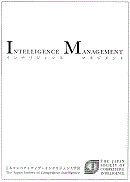Volume 2, Issue 1
Displaying 1-5 of 5 articles from this issue
- |<
- <
- 1
- >
- >|
Article
-
2010 Volume 2 Issue 1 Pages 3-16
Published: September 18, 2010
Released on J-STAGE: January 31, 2013
Download PDF (1581K) -
2010 Volume 2 Issue 1 Pages 17-27
Published: September 18, 2010
Released on J-STAGE: January 31, 2013
Download PDF (905K) -
2010 Volume 2 Issue 1 Pages 29-35
Published: September 18, 2010
Released on J-STAGE: January 31, 2013
Download PDF (866K) -
2010 Volume 2 Issue 1 Pages 37-48
Published: September 18, 2010
Released on J-STAGE: January 31, 2013
Download PDF (1203K) -
2010 Volume 2 Issue 1 Pages 49-56
Published: September 18, 2010
Released on J-STAGE: January 31, 2013
Download PDF (955K)
- |<
- <
- 1
- >
- >|
